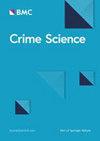To SPB or not to SPB? A mixed methods analysis of self-protective behaviours to prevent repeat victimisation from cyber abuse
IF 2.6
Q1 CRIMINOLOGY & PENOLOGY
引用次数: 0
Abstract
This paper presents the findings from a mixed-methods examination of self-protective behaviours (SPBs) adopted by victims of cyber abuse from the rational choice perspective. The data from a sample of the U.S. adults ( $$N = 746$$ N = 746 ), members of an online opt-in panel, were analysed to first distinguish the types of SPBs adopted by victims of cyber abuse using a thematic analysis of open-ended responses. We then identified the factors associated with an increased likelihood of adopting SPBs and the specific identified types of SPBs using logistic regression with Bayesian variable selection and a stochastic search algorithm. Of the six identified types of SPBs, adjusting privacy settings was the most commonly reported response, and improving security (e.g. changing passwords, etc.) was the least common SPB. Older victims who reported higher than the average perceived impact from victimisation, were abused by a stranger and experienced either surveillance of their online activities or multiple types of abuse, were significantly more likely to adopt an SPB. Our findings inform strategies for both Internet user education and for preventing cyber abuse victimisation.SPB 还是不 SPB?用混合方法分析自我保护行为,防止网络虐待的重复伤害
本文从理性选择的角度,对网络侵权受害者采取的自我保护行为(SPBs)进行了混合方法研究,并介绍了研究结果。本文分析了来自美国成年人样本($$N = 746$$ N = 746)的数据,这些样本是在线选择加入小组的成员,首先通过对开放式回答的主题分析来区分网络虐待受害者采取的自我保护行为的类型。然后,我们使用贝叶斯变量选择和随机搜索算法进行逻辑回归,确定了与采用 SPBs 的可能性增加相关的因素以及具体确定的 SPBs 类型。在已确定的六种 SPB 中,调整隐私设置是最常见的应对措施,而提高安全性(如更改密码等)是最不常见的 SPB。年龄较大的受害者所报告的受害影响高于平均水平、受到陌生人的虐待、网上活动受到监视或遭受多种虐待,他们采取 SPB 的可能性要高得多。我们的研究结果为互联网用户教育和预防网络虐待受害者的策略提供了参考。
本文章由计算机程序翻译,如有差异,请以英文原文为准。
求助全文
约1分钟内获得全文
求助全文
来源期刊

Crime Science
Social Sciences-Cultural Studies
CiteScore
11.90
自引率
8.20%
发文量
12
审稿时长
13 weeks
期刊介绍:
Crime Science is an international, interdisciplinary, peer-reviewed journal with an applied focus. The journal''s main focus is on research articles and systematic reviews that reflect the growing cooperation among a variety of fields, including environmental criminology, economics, engineering, geography, public health, psychology, statistics and urban planning, on improving the detection, prevention and understanding of crime and disorder. Crime Science will publish theoretical articles that are relevant to the field, for example, approaches that integrate theories from different disciplines. The goal of the journal is to broaden the scientific base for the understanding, analysis and control of crime and disorder. It is aimed at researchers, practitioners and policy-makers with an interest in crime reduction. It will also publish short contributions on timely topics including crime patterns, technological advances for detection and prevention, and analytical techniques, and on the crime reduction applications of research from a wide range of fields. Crime Science publishes research articles, systematic reviews, short contributions and theoretical articles. While Crime Science uses the APA reference style, the journal welcomes submissions using alternative reference styles on a case-by-case basis.
 求助内容:
求助内容: 应助结果提醒方式:
应助结果提醒方式:


